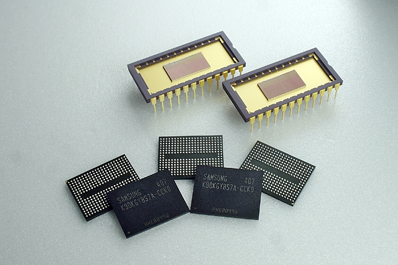Samsung Starts Mass Producing Industry’s First 32-Layer 3D V-NAND
Author: Samsung Date: 2014-06-03

Samsung Electronics Co., Ltd. yesterday announced that it has begun mass producing the industry's first three-dimensional (3D) V-NAND flash memory using 32 vertically stacked cell layers, which is its second generation V-NAND offering.
Samsung's 32-layer 3D V-NAND – also referred to as Vertical NAND– requires a higher level of design technology to stack the cell arrays than the previous 24-layer V-NAND, yet delivers much greater production efficiency because Samsung can use essentially the same equipment it used for production of the first generation V-NAND.
In addition, Samsung has just launched a line-up of premium SSDs based on its 2nd generation V-NAND flash memory with 128 gigabyte (GB), 256GB, 512GB and 1TB storage options. After introducing 3D V-NAND-based SSDs to data centers last year, Samsung is now extending its V-NAND SSD line-up to high-end PC applications, in expanding its market base.
"We increased the availability of our 3D V-NAND by introducing an extensive V-NAND SSD line-up that covers the PC market in addition to data centers," said Young-Hyun Jun, executive vice president, memory sales and marketing, Samsung Electronics. "Look for us to provide a consistent, timely supply of high-performance, high-density V-NAND SSDs as well as core V-NAND chips for IT customers globally, contributing to fast market adoption of 3D NAND technology."
The new 3D V-NAND-based SSDs have approximately twice the endurance for writing data and consume 20 percent less power, compared to planar (2D) MLC NAND-based drives.
Later this year, Samsung will introduce additional premium 3D-based SSDs based on this 2nd generation V-NAND memory with even higher reliability and higher-density in satisfying a diversity of customer needs.
According to a recent research report by Gartner, the global memory market is expected to grow from US $75.5 billion in revenues to approximately US $79.7 billion in 2017, while its NAND flash portion will continue to rapidly increase to reach a more than 50 percent share or about US $44.6 billion in 2017.
From: http://www.samsung.com/
Copyright© 2010-2024 Boardcon Embedded Design Ltd. All rights reserved. | www.boardcon.com | www.armdesigner.com Tel:+86-755-26481393


